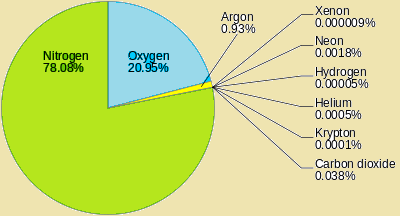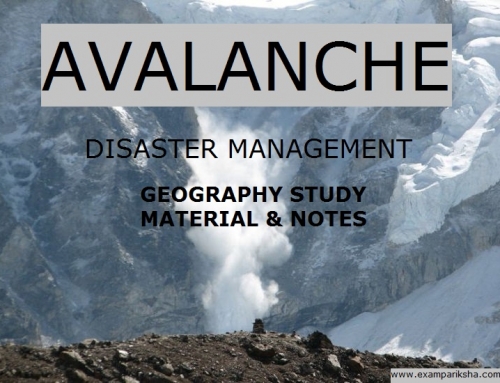The composition of Atmosphere is said to be a mixture of different gases. It envelops around the Earth. 99% of total mas of atmosphere is confined to highest of 32 km from the Earth’s surface.

Permanent gases of the Atmosphere
- Atmosphere is consists of various gases, water vapour and dust particles.
- The presence of oxygen becomes negligible at the height of 120 km from the surface of earth with regards to the composition of atmosphere.
- Carbon dioxide and water vapour occur only upto 90 km.
- Carbon dioxide is meteorically very important as it is transparent to incoming solar radiation but opaque to outgoing terrestrial radiation. It is also responsible for greenhouse effect.
- Ozone gas: 10-50 km above earth surface and acts as filter, absorbing ultraviolet rays from the sun. Ozone prevents the rays from reaching the surface of earth.
- Water vapour is variable gas, decreases with altitude.
- It also decreases from equator towards the poles.
- Acts like blanket allowing the earth to neither to become too cold nor too hot. Also contributes to the stability and instability in the air.
- Dust particles: are in higher concentration in subtropical and temperate regions due to dry winds in comparison to equatorial and polar regions.
- Dust particles act as a hygroscopic nuclei over which water vapour of atmosphere condenses to produce clouds.
The composition of atmosphere varies with local environmental factors also.
Structure of Atmosphere:
There are five layers in the structure of atmosphere depending upon temperature.
I. Troposphere:
- It is the lowermost layer.
- 13 km height average with 8 km at poles and 18 km at equator (lesser at poles and greater at equator).
- The thickness is 18 km at equator because heat is transported to great heights by strong convectional currents.
- This layer has adult particles and water vapour.
- Climate and weather changes occur here.
- Temperature decreases at rate of 1 degrees celcius for every 165 m of height.
- Zone separating troposphere from stratosphere is called tropopause.
- Temperature at tropopause is minus eighty degrees celcius over equator and minus forty five degrees celcius over the poles. This remains constant through the year.
II. Stratosphere
- It is found above the troposphere.
- extends upto 50 km of height.
- Has ozone layer – absorbs ultraviolet radiation and shields life on earth from harmful energy.
III. Mesosphere:
- Above stratosphere
- reaches till 80 km height.
- Temperature decreases with altitude here, by 80 km it reaches minus hundred
 degrees celcius .
degrees celcius . - The upper limit is called mesopause.
IV. Ionosphere or Thermosphere:
- 80 to 400 km above mesopause.
- Ionosphere consists of electrically charged particles known as ions.
- Radio waves which are transmitted from the earth are reflected back by this layer.
- Temperature here increases with height.
V. Exosphere:
- It is the outermost layer.
- Not much is known about this layer.





